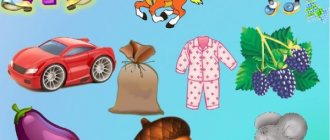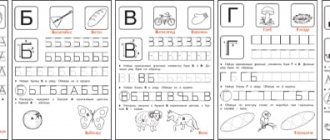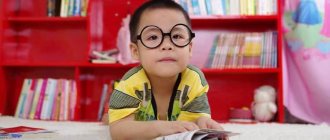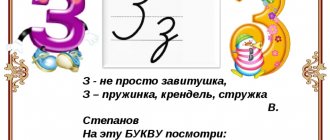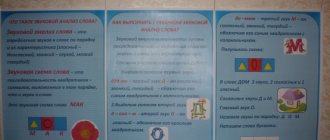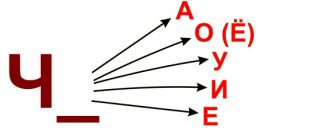The problem of dividing words into syllables in the Russian language is one of the most complex in modern linguistics and has not been fully resolved. This is due to the lack of a common understanding of the essence of a syllable. The inability to record the characteristics of a syllable as a single whole, the phonetic lack of expression of the boundary between syllables leads some linguists to the idea that syllable divisions do not exist in the Russian language at all.
Now there are two main theories of syllables: R. I. Avanesova (Moscow Phonological School) and L. V. Shcherba (Leningrad Phonological School). The rules for dividing into syllables in these two theories are slightly different. The Leningrad school divides into syllables in a way that is familiar to the ear of a Soviet citizen and as was previously taught in all Russian schools (and therefore its rules are popularly called “old”), and the Moscow school is completely different (“new rules”).
But since at the moment none of these schools has refuted the other, in different textbooks the rules of syllabification may be formulated differently, depending on the position of which phonological school the author of the textbook shares.
If earlier we divided words into syllables and transferred these words according to the same rule, we adhered to Shcherba’s theory. In Avanesov’s theory, these processes are governed by 2 different rules, and the division of a word into syllables often does not coincide with the division into parts of the word (prefix, root, suffix, ending) and with the division of the word for hyphenation. So, the word cat should be divided into syllables according to Shcherba’s theory like this: cat, according to Avanesov’s theory like this: cat.
For example, the word calculated is divided into the morphemes calculated-a-nn-y (ras - prefix, count - root; a, nn - suffixes; й - ending).
When transferred, the same word is divided as follows: calculated.
According to Avanesov, the word is divided into syllables as follows: calculated.
Open and closed syllables
Syllables can be open or closed. In Russian words, most syllables are open. Open syllables organize
- perch
- a-ir
- swamp
- fiber
Closed syllables form
- nail
- cover
- pigeon
- locomotive
- hundred-rozh
Unpaired voiced consonants [й'], [л], [л'], [м], [м'], [н], [н'], [р], [р'] can form a closed syllable in any phonetic positions: at the beginning, in the middle and at the end of words:
- mirror
- Bol-tick
- sa-ray-chik
- sa-ra-fan
Syllable SY
SA-so-su-sy So-sa-sy-su Sy-su-sa-so Su-sy-su-sa
Say the words and sentences:
Cheese, rash, damp, cheesecake, damp, raw, cheese, dampness, raw material, whey, play, son, sprinkle, well-fed, Hair, braids, noses, mustache, rails, parcel, scarf, snub-nosed,
The hair was braided. The parcel was damp. The cheese gave Sanya a rash. Cheese pancakes are very filling. Mom's son has a snub nose. Cheese is made from whey. It's damp outside.
Color the pictures. Sign the names.
Syllable emphasis
Below we describe general approaches to highlighting syllables in words for the traditional school and with in-depth study. For detailed materials with explanations and examples, see the rules page for dividing words into syllables.
Traditional school
The main rule of the regular school curriculum, which the child is guided by: as many vowels, as many syllables. When translating words, they are guided by the rules: we transfer the word by syllables, you cannot leave one letter on a line. Everyone knows these rules.
When dividing a word into syllables, you can use the push method: we place our palm to our mouth and feel the push of air as we pronounce the word. Or we imagine a candle in front of us: the number of times the flame flickers, the number of syllables. For some words with flowing consonants, this option is not always suitable.
The principles of teaching division into syllables vary in different primary schools. In some schools, they are taught to visually divide a word into parts - vowel + consonant connectives (or vowel + several consonants). Other schools teach how to pronounce a word with pauses in a convenient way. Pauses create places for dividing syllables.
School of Advanced Study
In schools for in-depth study of the Russian language and in institute programs, cases are dealt with when words are not transferred into syllables, that is, the syllable of transfer does not coincide with the phonetic syllable.
The division of a word into syllables occurs in such a way that the syllable is pronounced in increasing order: from voiceless pronunciation to voiced pronunciation. Therefore, syllables consisting of several sounds always begin with a voiceless consonant and end with a vowel. For example: by mail (but not by mail), mo-shka (but not by mosh-ka). A syllable can end with a voiced consonant (sonorant r, l, m, n), which sounds less sonorous than a vowel, but louder than a voiceless consonant. For example: bun, cook.
How to determine how many syllables are in a word? There are as many syllables in a word as there are vowels
Examples of words with one syllable: sound, wolf, class, goose, hedgehog, elephant, beetle, spruce, beast, snake, table, mushroom, leaf, door, chair, house, elk, speech, stump, bison, cat, edge. Examples of words with two syllables: answer, vowel, bear, pit, stork, lesson, language, hare, hares, anchor, hedgehog, autumn, spinning top, nut, snake, fox, hawk, friends, teapot, squirrel, wasp, long, blow, Russian, window, Yura, watermelon, seagull, iron, willow, tree, notebook, carrot, fire, duck, skates, ear, school, bee, fly, June, box, blizzard, frost, boy, glass, days, fairy tale, blizzard, Julia, Yasha, deer, sun, family. Words with 3 syllables: teacher, cucumber, harvest, berry, which, apple, vegetables, sparrow, consonant, parrot, student, stressed, trees, pencil, Maria, alphabet, butterfly, line, pan, Russia, big, copybook , alley, Christmas tree. Words with four syllables: monkey, bicycle, acacia. Words with 5 syllables: stress, mathematics, literature, white-headed.
How to correctly divide words into syllables?
Words are divided into phonetic syllables according to the number of vowel sounds. A word contains as many syllables as there are vowels. One vowel sound surrounded by consonants creates a monosyllabic word that is not divided into syllables:
- som
- mole
- waltz
- ford
To be able to divide a word into syllables, it must have at least two vowel sounds that form two-syllable words:
- hedgehog
- do-mik
- salad
- rabbit
If a sonorant consonant is between two vowels, then
- crow
- pendant
- covet
- cla-nya-tsya (-tsya sounds like [tsa])
When dividing into syllables, we take into account that the syllable ends with a vowel, and the group of subsequent noisy consonants, in combination with or without a sonorant sound, moves off at the boundary of the syllable division to the next phonetic syllable:
- no-chnik
- roof
- cork
- Creation
Only unpaired voiced consonants in the middle of a word can close a syllable:
- alphabet
- construction
- quarter
- lan-dy-she-vy
- silent
If a word has the same consonants, then they begin the next phonetic syllable:
- program
- te-nnny-sny
- sneakers
- parallel
This division into syllables is phonetic, which does not coincide with the orthographic hyphenation of words with double consonants.
The letters “й”, “ь”, “ъ” belong to the syllable after which they are written:
- rail
- flakes
- departure
- lifting
Let us indicate the order in which words are divided into syllables using the following algorithm.
How to divide a word into syllables with a combination of consonants
How to divide a word into syllables if there are several consonants nearby in the middle? How to correctly break a word into syllables: cat or cat? You need to understand the principle of so-called greater sonority. It is observed in the second case. From consonant to vowel. First there is a dull sound, then a voiced consonant, and at the end a vowel - shka. The first syllable ends with a vowel (ko). Such syllables are called open. We have much more of them than those that end with consonants: table, chair (they are called closed syllables).
In the middle of a word, the syllable is usually open, that is, it ends with a vowel sound: stra-na. According to the principle of increasing sonority, all consonants move in most cases to the subsequent syllable: cat.
If several consonants are combined in the middle of a word, then all the consonants following the vowel go to the next syllable: o-flow. These can be the same consonants or simply combinations of different consonants: o-flow, sha-pka, ko-shka.
An exception to this point: only those syllables in the middle of a word that end with unpaired consonant voiced sounds (they are called very voiced, sonorant) end with a consonant: [й], [р], [р'], [л], [л '], [m], [m'], [n], [n']: may-ka, San-ka, man-ka.
If in a word several sounds merge into one sound, then they all go to one syllable: zhu-zhzh (Zh)at, distracted (CA). In these cases, one should not confuse division into syllables and morphemic division for transferring a word: for example, we divide o-teket by syllables, but for transfer we divide the same word like this - ot-tek.
To summarize the rule more clearly:
Words are “cut” into syllables after each vowel. How many vowels, so many syllables.
BUT: if after a vowel there are r, rь, l, l, m, m, n, n, y , and there is also a paired consonant behind them, they (sonorant and sonorant with ь) go to the previous syllable.
If these consonants are 2 identical (nn, mm, ll..., 2 any sonorant, paired, first paired then unpaired), they go to the next syllable.
To avoid confusion, refresh your mind about the transfer rules >>
Why be able to divide a word into syllables?
Isolation of syllables is important for the correct hyphenation of words; the syllabic principle is the main one in competent hyphenation, although not the only one. Both skills are important: identifying syllables in a word and the ability to find morphemes (meaningful parts of a word), because syllables and morphemes in many cases do not coincide. The syllable is not a prefix or root, or a suffix.
Division into syllables occurs when a word is pronounced. And dividing a word into parts is necessary for writing a word, that is, for writing letters in prefixes, roots, and suffixes.
Isolation of morphemes (prefixes, suffixes, roots) and syllables are two different actions, two different principles on the basis of which competent transfer of words is carried out.
For example, when transferring a word syllable by syllable, you need to simultaneously see the root and prefix, so that, for example, you do not tear off the first and last letter of the root or break a monosyllabic prefix.
There are a number of transfer rules that rely on the ability to divide a word into syllables and morphemes at the same time. Therefore, you need to be able to do one and the other.
Syllable SO
Say the words and sentences:
Sable, owls, soda, falcon, salt, Sonya, catfish, sleep, barefoot, temple, hair, high, wheel, piece, sock, sand, beans, dog, advice, nightingale, straw, meat.
Boris was bitten by a dog. The dog was given a piece of meat. Dogs don't bite their own. A dog sleeps on the straw. Sonya has a braid right down to her waist. Give Sanya juice and a piece of pineapple. Sand in a scoop. Salt in a salt shaker. Sleepy catfish at the bottom. Sonya slept on the straw. Sonya, buy mom some soda.
Color the pictures. Sign the names.
Techniques
What is the best and most effective method of teaching reading? There are many opinions on this matter; a lot of arguments are put forward in favor of certain methodological developments and approaches. Most experts are inclined to believe that the first thing to start reading by syllables is to use an ABC book for learning to read or cubes, where letters and syllables are accompanied by colorful images.
Training using the Doman method
Glen Doman spent a long time researching the intellectual capabilities of children and came to the conclusion that basic information is stored in the brain before the age of 6, and it takes a minimum of time to master.
He proposed teaching children to read without additional motivation, simply by showing them cards with words and pictures. According to psychologists, didactics is based on photographic memory.
Cards must be shown daily, holding eye contact for a couple of seconds. The amount of material shown increases gradually. For example, in the first 3 days, show 2-3 cards, at least 2-4 times a day. For days 4-7, 5 cards each. And so on.
Don’t expect lightning-fast results, but in a month or a month and a half, the child will already know and read more than 30 words. You can start learning from diapers.
Reading by syllables
All parents own it. It was according to this system that children were taught to read in Soviet schools. First, the baby learns the alphabet, then puts them into syllables, simple words. This is the best option for home learning process. It is understandable to non-professional teachers and children. It is easily absorbed and brings good results in a short period of time.
Reading by warehouses
The child needs to learn vowels. Secure them firmly. Then move on to mastering consonants, while simultaneously adding melodious sounds to them for reading.
When read, the word is divided not into syllables, but into clauses. For example, CHA-SH-KA. Each consonant is responsible for one warehouse.
Zaitsev cubes
The set contains 52 units of demo material. These are square cubes with syllables. They are of different sizes and colors. 7 of them are repeated. The cubes sound: they make noise if they have a voiced consonant written on them, they jingle if they have a voiced consonant. They cannot be used to form words that are spelled incorrectly. For example, there is no syllable ZHY, SHCHYA. The baby gains literacy skills.
In the first lessons with children 4-5 years old, you should invite them to play with blocks, without focusing on letters and syllables. The child himself will understand that they are different from each other.
In the following lessons, the child can begin to put words together according to a pattern and begin to read. It is important for parents not to force learning, but to give knowledge gradually, by prompting and telling during the game.
Zaitsev's kit includes tables. They are hung at the baby's eye level. The information is remembered automatically.
Methodology of N. Zhukova
Zhukova’s method of teaching reading for preschoolers is considered the most effective, as it teaches the child to read from sounds to letters . This is important, because in this case the child learns to first hear the sounds in the word, and then the letters.
When studying the primer with your child, pronounce sounds out loud , not letters: the sound “M”, not the letter “EM”, the sound “S”, not the letter “ES”. This will allow the child to avoid mistakes when connecting letters into syllables.
Otherwise, the baby will read instead: “AM - AEM”, instead of AS - AES or ASE.
Zhukova’s method of teaching reading for preschoolers is considered the most effective, as it teaches the child to read from sounds to letters. This is important, because in this case the child learns to first hear the sounds in the word, and then the letters. The baby first learns to read individual letters and then connect the letters into syllables.
Primer by Nadezhda Zhukova
Nadezhda Zhukova’s primer is the most effective method of teaching reading to preschoolers
When using Zhukova’s primer, be sure to read the author’s recommendations on how to start learning correctly. They are located at the bottom of the primer page.
How to teach a child to add his first syllables?
You should not learn the alphabet in order. The first sounds with which you should start quickly learning to read are vowel sounds: “A”, “O”, “U”, “E”, “I”. Kids can pronounce them and even sing them.
Then you should gradually add the iotized vowels “I”, “E”, “Yo”, “Yu” and the sound “Y” .
Having mastered vowels, you can move on to consonants. Start with sonorant and voiced consonants, gradually moving to voiceless ones.
Sonorant consonants: “L”, “M”, “N”, “R”
Voiced consonants: “B”, “V”, “G”, “D”, “Zh”, “Z”
Voiceless consonants: “P”, “F”, “K”, “T”, “Sh”, “S”, “X”, “C”, “Ch”, Shch”
You should finish your study with the letters “Y”, “b” and “b” - you also need to know about their existence.
How to quickly teach a child to read
How to teach a child to connect different sounds and pronounce them together?
- First teach your child to combine vowels and pronounce them together: AU, UA, OU.
- Then move on to syllables that combine vowels and consonants: MA, BA, DA.
- It is better to start teaching your child with the letters “M” and “A”, since their combination is familiar to him from birth, it underlies the simplest word - “mother”.
- Draw the first sound, and then attach the second to it: M-M-M A-A-A, MMMAAA. Please note that in Zhukova’s ABC book the picture shows how the letter “M” runs to the letter “A” and then they are connected to form the syllable “MA”.
Primer by Nadezhda Zhukova
- After the child masters direct syllables (consonant - vowel), move on to studying reverse syllables (vowel - consonant): AM, UM, US.
- Connect letters according to the voiced - unvoiced principle, alternating and combining: PA-BA, ZA-SA.
- Read syllables starting with consonants also slowly, in a chant.
- Pronounce and read consonants as sounds: M-M-M, S-S-S.
- Teach your child first to read simple words consisting of 1 syllable: HOUSE, CAT, ROM. Then from a word of 4 letters, 2 syllables: MOTHER, BABA, DAD, SOAP Then from 3 syllables or more: MILK, SOROKA.
- Teach your child to read simple texts and fairy tales with a repeating plot: “Ryaba the Hen,” “Kolobok,” “Turnip.”
In this way, we learn to read syllables most effectively.
Among the useful and popular methods are games for teaching reading, educational cards, courses for children 5 years old and younger. I read by syllables, We learn to read syllables in which children learn the basics of word composition in a detailed and visual form, they are taught to read books by syllables.
A set of cards “Funny syllables for children” for studying at home.
, print and study at home.
Set of cards “Funny syllables for children”
Of course, it is important not only to know how to quickly teach a child to read syllables, but also to let him understand that the words we use every day do not consist exclusively of easy elements that are convenient to pronounce, and gradually teach your child to add syllables ending in consonants.
At first, children may make mistakes, long pauses, and confuse certain letters. In no case should you scold them for this, but be patient and continue learning to read step by step, using flashcards and other materials.
After some time, you will see noticeable results, since children very quickly grasp and process any information that is new to them. Very soon your child will be able to proudly declare: “I read syllables!”, and demonstrate his skills to an enthusiastic public.
Syllable table
This is an auxiliary teaching material necessary for teaching speed reading and instilling the skill of a good rhythm of assimilation of information. The syllabary table consists of columns of vowels and consonants.
You can use it immediately after learning a new phoneme. For example, a preschooler has mastered the letter N. He can immediately begin reading syllables with this consonant. During classes, the baby will learn what an open syllable is, how syllables and words are formed. If you read syllables from the table regularly, the pace and rhythm of reading increases and literacy becomes automated.
A set of games and exercises
Taking into account the existing stages and methods of teaching reading, you shape the entire educational process. After the child has learned letters and sounds, you can begin to teach the child to read syllables. It is best to conduct classes in a playful way - this will make the preschooler more comfortable, and it will also increase interest in reading in general.
So, what games can be used in the learning process?
- Game “How many syllables - so many steps!” First, you should teach your child to hear syllables in words and pronounce them. You need to explain to him that the number of syllables in a word is equal to the number of vowels (you can remind him that vowels are sounds that “can sing,” and sing these sounds with him). Start this game with simple words with one or two vowels, preferably repeated: mom, dad, Sasha, hall, garden; table, yard, milk, etc. When you repeat all the vowels separately, gradually complicate the game, including words with different sounds: summer, Vova, heaven, Luntik, etc.
- "Adventurers". It is pointless to explain to children 5 years old the rules for attaching sonorant sounds to syllables, as well as transferring consonant letters to other consonants, as in the word no-ski. Use games to remember specific syllables. Draw a poster with a map of a fictional city. At each station, draw syllables in a frame with a bright felt-tip pen, start with simple ones: at station 1 - MI, at station 2 - SHA, at station 3 - DE, at station 4 - YES. Give your child a car and travel around the city with him. Ask him to name the syllables; for each correct answer, give him a chip. Reward for completing the entire game with a medal. Make several of these posters with different stations and syllables.
- "Magnets". An effective game if you set out to teach your child to divide not only simple but also complex words into syllables. Buy letter magnets and attach them to your refrigerator or magnetic board. Together with your child, make up a few words every day using syllables from magnets. This could be some kind of code to get an extra 10 minutes of watching a cartoon. Or the trick “divide the word BA-NAN into syllables and get a banana.” Make up a complex word, for example the surname - ALEXEEVS. And ask the child to divide it into syllables. Help if he doesn't succeed.
- "House-man-vegetable." Cut out several houses and glue them to whatman paper. Each house will have a name, for example MA or TO. Cut out the little men and give each a name beginning with the syllable that the houses are named with (Masha and Tom). Ask your child to correctly connect the person and the house using the first syllable. Then Masha and Tom will go to the store and buy fruits or vegetables starting with the syllables “ma” and “to” (tangerines, tomatoes). Cut out or draw a store with various products.
- "Write in the sand." We learn to write letters on multi-colored semolina. Children like to draw in the sand; you can buy multi-colored sand in the store, or paint semolina, put it on a tray and show your child how to write various letters and syllables. This develops fine motor skills and creativity.
- “Combine the syllables into words.” You can gradually move on to more complex exercises. Write syllables on cards and ask them to form a word. Suggest short words first, then long ones. Make a pyramid of words: the shortest word is at the top, and the longest at the bottom.
- “I’m following the trail.” Write words on A4 sheets of paper, distribute the sheets throughout the apartment, and at the finish line put a prize (a toy, a ticket for attractions), ask the child to follow in the footsteps. Stepping on each one, he needs to name the word syllable by syllable. You can also write individual syllables so that with each step the child gets a new word. By performing this simple but interesting exercise, the child will learn to connect syllables.
- “Find another word in the word.” DID (dinner, gave), GARDEN (city, clan), etc.
- Texts for reading to preschoolers. Small texts from which a child can begin to read syllables in words. Use rhyming texts and pure sayings (“Mom washed the frame”, “We have fun in the village”). First, the child must remember the entire phrase, and then divide it into syllables.
Remember: play is an optional activity, so don’t force your child to do something he doesn’t want, but rather motivate him or reschedule the activity for another time. The more colorful the game is designed, the longer the preschooler will be occupied with it, and the better the results will be.
Games
Game-based learning is considered the most effective. Do not waste time on educational entertainment for preschoolers, forget about boring lessons, then you will achieve success faster.
Letter learning games
- We draw letters, paint them, sculpt them. Use coloring books, prepare stencils yourself.
- Puzzles. Assembling letters from parts. Make the puzzles yourself and cut them into large pieces or buy teaching material at the store.
- Memory. Write down the letters on small pieces of paper. Lay out the cards on the table. Let the baby remember, then turn it over. Let him look for the desired letter according to the model.
- We write on sand and semolina. Attaching letters on loose material trains memory and motor skills at the same time.
Games for the ability to add syllables
- Collect the word. Syllables are laid out on cards in front of the preschooler. Task: collect words, one or more.
- Guess a riddle. In front of the baby there is a path of words, among them you need to find the hidden word.
- Word in word. The child is offered a long word, 12-15 letters. You need to make smaller words from it.
- Walking games. Prepare the playing field yourself. Write the letters in the empty cells. When walking the chip, the child reads the sounds, putting them into syllables.
To develop reading skills
- Sounds in a circle. Children need to come up with words that begin with the last letter of the previous word. For example, window-OSA-Album, etc.
- Reading with adults. The book is placed on the table so that the text is visible to the parent and baby. When one reads, the other follows. Stop unexpectedly and ask to continue. Attention and visual memory develop.
- We are looking for an error. Parents give the child a text with errors and catches. For example, KoSa ate all the grass in the field. Sol(b) was spilled onto the table. The child’s task is to find and correct the mistake while reading.
- Who's speaking? Animal toys and clean leaves will come in handy. Together with your child, sign the cards: Mee, Oink, Mu, etc. Empty will substitute the required syllable for the toys and read.

